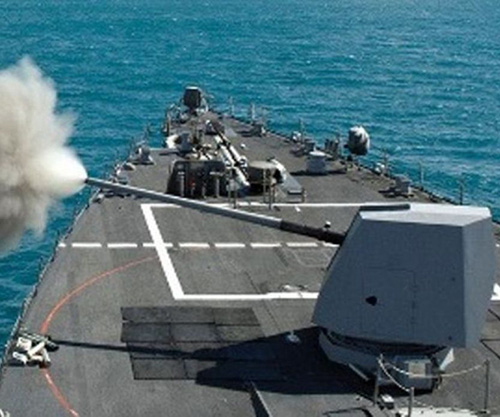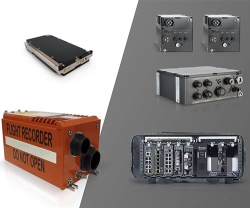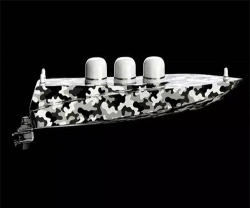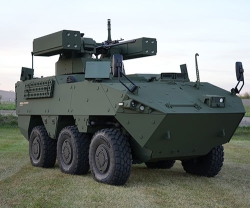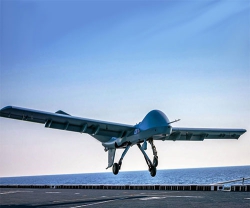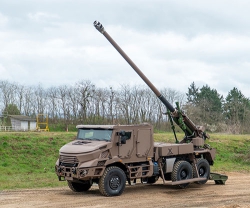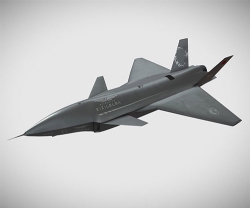The US Navy has now started construction on a first-of-its-kind new surface warfare destroyer armed with improved weapons, advanced sensors and new radar 35-times more sensitive than most current systems, service officials announced.
Construction of the first DDG-51 Arleigh Burke-class Flight III Destroyer is part of a sweeping Navy and Pentagon effort to speed up delivery of new warships and expand the surface fleet to 355 ships on an accelerated timeframe.
Navy Flight III Destroyers have a host of defining new technologies not included in current ships such as more on-board power to accommodate laser weapons, new engines, improved electronics, fast-upgradeable software and a much more powerful radar. The Flight III Destroyers will be able to see and destroy a much wider range of enemy targets at farther distances.
In fact, a new software and hardware enabled ship-based radar and fire control system, called Aegis Baseline 10, will drive a new technical ability for the ship to combine air-warfare and ballistic missile defense into a single system.
The AN/SPY-6 radar, also called Air and Missile Defense Radar (AMDR), is engineered to simultaneously locate and discriminate multiple tracks.
This means that the ship can succeed in more quickly detecting both approaching enemy drones, helicopters and low flying aircraft as well as incoming ballistic missiles.
The Raytheon-built AN/SPY-6(V) radar is reported by developers to be 35-times more powerful than existing ship-based radar systems; the technology is widely regarded as being able to detect objects twice as far away at one-half the size of current tracking radar.
The farther away ship commanders can see approaching threats, across the spectrum of potential attack weapons, the faster they are able to make time-sensitive decisions about which elements of a ship’s layered defense systems should be used.
The AN/SPY-6 platform will enable next-generation Flight III DDG 51s to defend much larger areas compared with the AN/SPY-1D radar on existing destroyers. In total, the Navy plans as many as 22 Flight III DDG 51 destroyers, according to a previously completed Navy capabilities development document.
The AN/SPY-6 is being engineered to be easily reparable with replaceable parts, fewer circuit boards and cheaper components than previous radars, according to Raytheon developers; the AMDR is also designed to rely heavily on software innovations, something which reduces the need for different spare parts, Navy program managers have announced.
Service officials say the new ship uses newly integrated hardware and software with common interfaces will enable continued modernization in future years. Called TI 16 (Technical Integration), the added components are engineered to give Aegis Baseline 10 additional flexibility should it integrate new systems such as emerging electronic warfare or laser weapons.
Earlier this year, the ship’s program manager Capt. Casey Moton said that special technological adaptations are being built into the new, larger radar system so that it can be sufficiently cooled and powered up with enough electricity. The AMDR will be run by 1000-volts of DC power.
The DDG Flight III’s will also be built with the same Rolls Royce power turbine engineered for the DDG 1000, yet designed with some special fuel-efficiency enhancements, according to Navy information.
The AMDR is equipped with specially configured cooling technology. The Navy has been developing a new 300-ton AC cooling plant slated to replace the existing 200-ton AC plant, Moton said.
Before becoming operational, the new cooling plant will need to have completed environmental testing which will assess how the unit is able to tolerate vibration, noise and shocks such as those generated by an underwater explosion, service officials said.
DDG 51 Flight III destroyers are expected to expand upon a promising new ship-based weapons system technology fire-control system, called Naval Integrated Fire Control - Counter Air, or NIFC-CA.
The technology, which has already been deployed, enables ship-based radar to connect with an airborne sensor platform to detect approaching enemy anti-ship cruise missiles from beyond the horizon and, if needed, launch an SM-6 missile to intercept and destroy the incoming threat, Navy officials said.
Navy developers say NIFC-CA presents the ability to extend the range of attack missiles and extend the reach of sensors by netting different sensors from different platforms -- both sea-based and air-based together into one fire control system.
The system hinges ship-based Aegis Radar –- designed to provide defense against long-range incoming ballistic missiles from space as well as nearer-in threats such as anti-ship cruise missiles.
Through the course of several interviews, SPY-6 radar developers with Raytheon have told Warrior Maven that simulate weapons engagements have enabled the new radar to close what’s called the “track loop” for anti-air warfare and ballistic missile defense simulations. The process involves data signal processing of raw radar data to close a track loop and pinpoint targets, Raytheon developers said.
The radar works by sending a series of electro-magnetic signals or “pings” which bounce off an object or threat and send back return-signal information identifying the shape, size, speed or distance of the object encountered.
The development of the radar system is hastened by the re-use of software technology from existing Navy dual-band and AN/TPY-2 radar programs, Raytheon developers added.
AN/SPY-6 technology, which previously completed a Critical Design Review, is designed to be scalable, Raytheon experts say.
As a result, it is entirely plausible that AMDR or a comparable technology will be engineered onto amphibious assault ships, cruisers, carriers and other platforms as well.
Raytheon statements say AN/SPY-6 is the first truly scalable radar, built with radar building blocks - Radar Modular Assemblies - that can be grouped to form any size radar aperture, either smaller or larger than currently fielded radars.
Raytheon data on the radar system also cites a chemical compound semi-conductor technology called Gallium Nitride which can amplify high-power signals at microwave frequencies; it enables better detection of objects at greater distances when compared with existing commonly used materials such as Gallium Arsenide, Raytheon officials explained.
Raytheon engineers tell Warrior that Gallium Nitride is designed to be extremely efficient and use a powerful aperture in a smaller size to fit on a DDG 51 destroyer with reduced weight and reduced power consumption. Gallium Nitride has a much higher break down voltage so it is capable of much higher power densities, Raytheon developers said.

